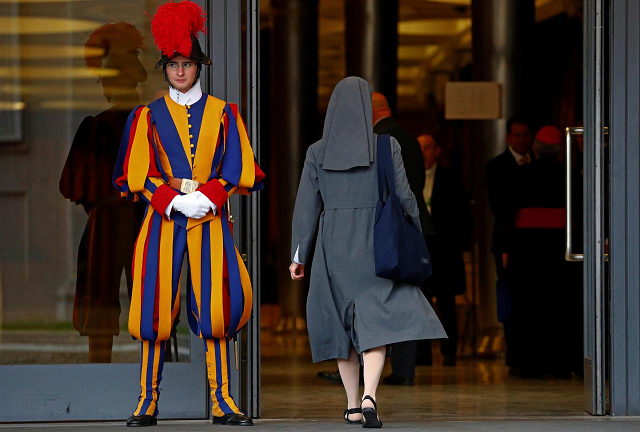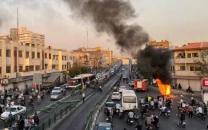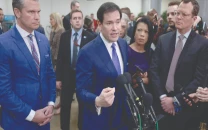Vatican meeting ends with call for greater role for women in Church
With stricter measures to combat sexual abuse and more transparency in Church

A nun enters to take part at the synod afternoon session led by Pope Francis at the Vatican October 16, 2018. PHOTO: REUTERS
The role of women took center stage at the synod, which was focused on reaching out to young people but has been overshadowed by the scandal over sex abuse in the Church and acrimony between social conservatives and reformers.
In a sign of the divisions, the synod used what appeared to be compromise language on the topic of homosexuality, saying people could not be identified solely by sexual orientation.
A working paper for the gathering, which began on Oct 3, had used the acronym LGBT, but this did not appear in the 60-page final document.
Pope says Church can no longer tolerate silence on abuse
The document also called for stricter measures to combat sexual abuse, including more transparency in Church structures, and denounced a culture of elitism among some Church leaders which it said can facilitate cover-up and corruption.
All three issues were among the subjects debated at the gathering, officially titled “Young People, Faith and Discernment of Vocation” and attended by some 300 bishops, priests, nuns and lay participants.
Only “synod fathers”, including bishops and some other male representatives, were allowed to vote on the final document. It will be sent to the pope, who will take it into consideration when he writes his own document.
Attention was drawn to the issue of women’s rights by the synod’s own rules, under which two non-ordained monks who lead religious orders were permitted to vote, while a nun with a similar role was not.
The Catholic Church restricts the priesthood to men, but allows people of both sexes who are not priests to hold positions of authority in other areas. However, none of the Vatican’s 60 departments is headed by a women and only six women hold decision making roles in the Vatican bureaucracy.
Young people, the document said, believed the Church still lagged in attempts to give women “space in decision making processes” in jobs not restricted to priests.
CHANGE UNAVOIDABLE
“The synod recommends making everyone (in the Church) aware of the urgency of an unavoidable change ...,” the document says.
It called for “a female presence in church roles at all levels, even in positions of responsibility,” which it described as a “duty of justice”.
The three sections on sexuality in the document were not as strong or as inclusive as some young people had wanted, although it renewed the Church’s “commitment against all sexually-based discrimination and violence”.
US archbishop criticised over sex abuse resigns with papal praise
The acronym LGBT appeared for the first time in a Vatican document in the working paper for synod issued in May. That working paper said: “Some LGBT youths wish to benefit from greater closeness and experience greater care by the Church.”
But conservative bishops, including those from Africa and at least one from the United States, opposed the mention.
“There is no such thing as an ‘LGBTQ Catholic’ or a ‘transgender Catholic’ or a ‘heterosexual Catholic,’ as if our sexual appetites defined who we are ...,” Philadelphia Archbishop Charles Chaput said in his address to the synod.
The Church teaches that having homosexual urges is not sinful but people must not act on them.
In its sections on sexual abuse scandals that have scarred the Church in a number of countries, the document called for “strong preventive measures to prevent any repeat” and supported calls for a stricter selection of men who want to be priests.



















COMMENTS
Comments are moderated and generally will be posted if they are on-topic and not abusive.
For more information, please see our Comments FAQ